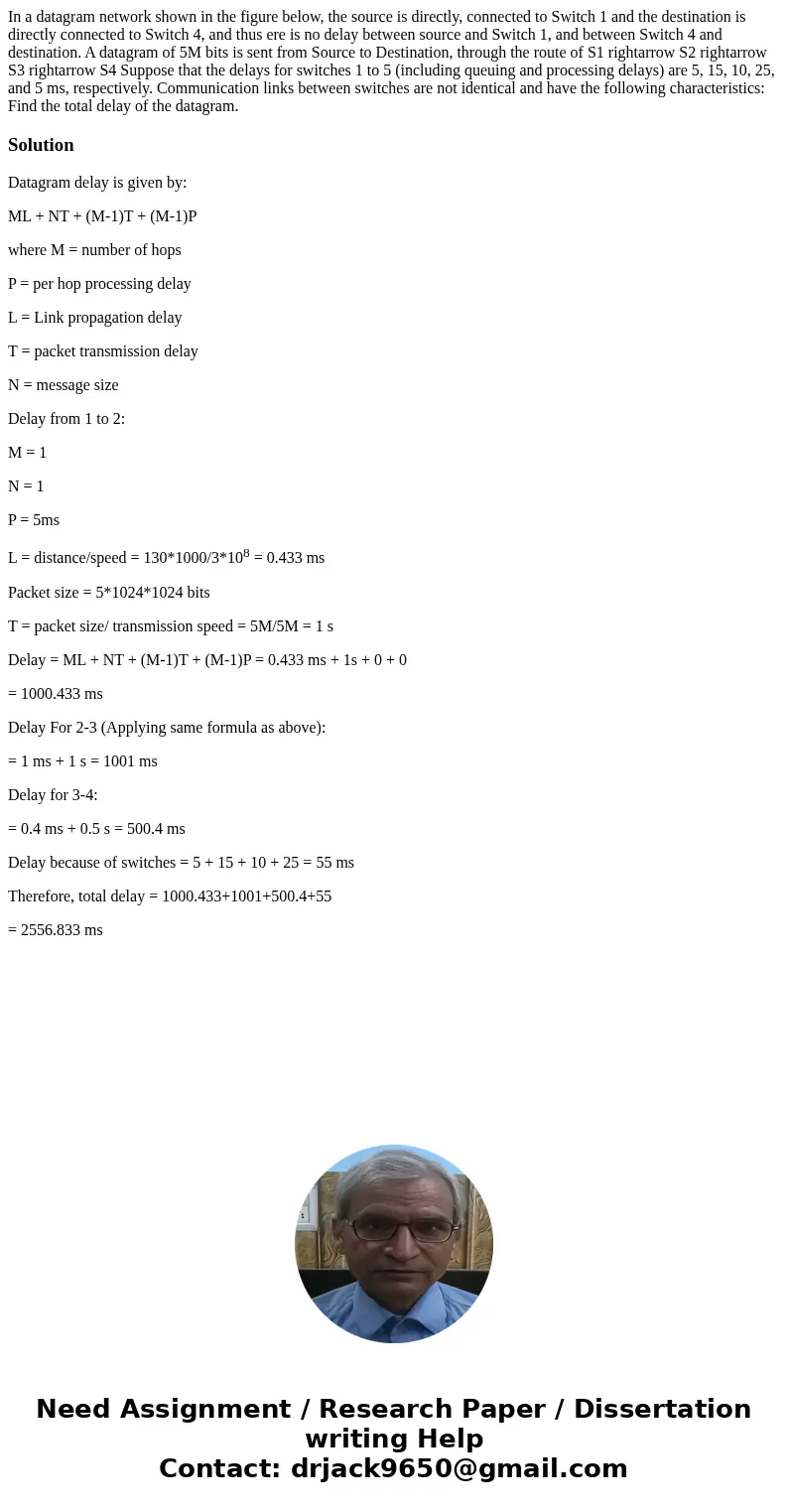In a datagram network shown in the figure below the source i
In a datagram network shown in the figure below, the source is directly, connected to Switch 1 and the destination is directly connected to Switch 4, and thus ere is no delay between source and Switch 1, and between Switch 4 and destination. A datagram of 5M bits is sent from Source to Destination, through the route of S1 rightarrow S2 rightarrow S3 rightarrow S4 Suppose that the delays for switches 1 to 5 (including queuing and processing delays) are 5, 15, 10, 25, and 5 ms, respectively. Communication links between switches are not identical and have the following characteristics: Find the total delay of the datagram. 
Solution
Datagram delay is given by:
ML + NT + (M-1)T + (M-1)P
where M = number of hops
P = per hop processing delay
L = Link propagation delay
T = packet transmission delay
N = message size
Delay from 1 to 2:
M = 1
N = 1
P = 5ms
L = distance/speed = 130*1000/3*108 = 0.433 ms
Packet size = 5*1024*1024 bits
T = packet size/ transmission speed = 5M/5M = 1 s
Delay = ML + NT + (M-1)T + (M-1)P = 0.433 ms + 1s + 0 + 0
= 1000.433 ms
Delay For 2-3 (Applying same formula as above):
= 1 ms + 1 s = 1001 ms
Delay for 3-4:
= 0.4 ms + 0.5 s = 500.4 ms
Delay because of switches = 5 + 15 + 10 + 25 = 55 ms
Therefore, total delay = 1000.433+1001+500.4+55
= 2556.833 ms

 Homework Sourse
Homework Sourse